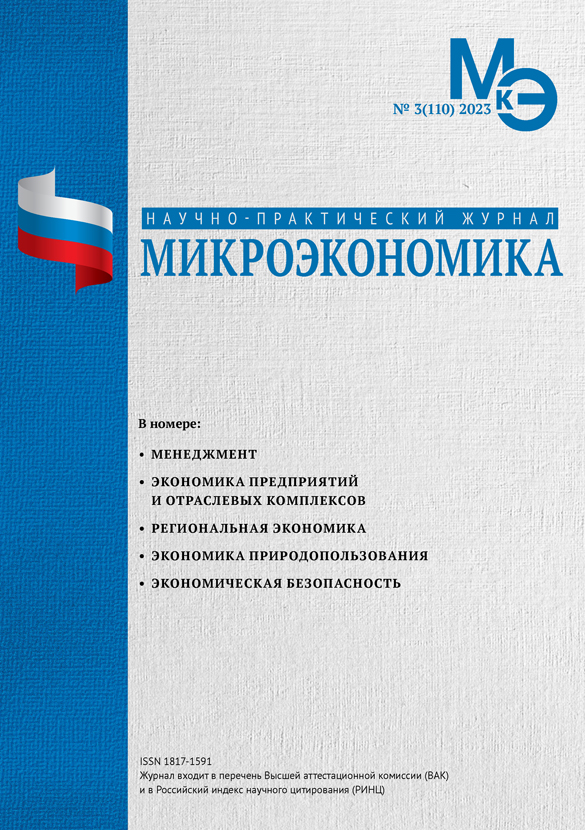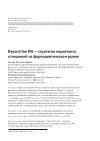The formation of the imperative of clinical marketing in the management of sustainable development of innovations in the medical industry
DOI: 10.33917/mic-4.117.2024.39-48
The article discusses the concept of clinical marketing as one of the types of marketing in healthcare. The imperative of clinical marketing has been defined. The prerequisites for the development of clinical marketing include the transition to the principles of evidence–based medicine, regulation, and an increase in the cost of R&D for innovative medical products. The key success factors of medical products that accelerate the penetration of medical innovations into the market are highlighted. The program and the main tools of clinical marketing, the scope of their application is described. The scope of application of clinical marketing has been determined in accordance with the class of medical devices. It is shown that the use of elements of clinical marketing can have a positive impact on the commercialization of innovations in the context of the import substitution policy of the medical industry.
References:
1. Kotler F., Armstrong G., Saunders D., Wong V. Marketing Fundamentals: Trans. from English. 2nd European ed. M.; St. Petersburg; K.: Williams Publishing House, 2005. pp. 502–512.
2. Shevchenko D.A. Fundamentals of Modern Marketing: Textbook for Bachelors / D.A. Shevchenko. M.: Dashkov i Ko Publishing and Trading Corporation, 2019. 604 p.
3. Yamshchikov A.S., Maeva E.I. Theoretical and Methodological Foundations of Marketing of Medical Institutions. Healthcare Manager. 2011;10:28–35.
4. Ahmed R.R. Pharmaceutical Marketing Mix Strategy and Physician’s Prescription Behavior. The Pharma Innovation Journal. 2014;3:8–12.
5. Jambulingam Thani. The R&D Marketing Interface in Biopharma and MedTech. Journal of Commercial Biotechnology. 2019. No. 24.
6. Eriksson Päivi & Rajamäki Heidi. Biotechnology marketing: Insider and outsider views. Journal of Commercial Biotechnology. 2010. No. 16.
7. Stremersch Stefan & Dyck Walter. Marketing of the Life Sciences: A New Framework and Research Agenda for a Nascent Field. Journal of Marketing American Marketing Association. 2009;73:4–30.
8. Appelt Peter & Hauser Tino. Marketing Innovation: Prescribing Innovations: A Practical Framework for Effective Marketing of Medical Device Innovations. Journal of Medical Marketing. 2006;6:195–202.
9. Zuyenkova Yu.A. Features of public relations in the promotion of high-tech medical products // Marketing in the new reality: monograph. Moscow: Limited Liability Company “Rusains”, 2024. pp. 88–97.
10. Garcia Gonzalez-Moral S., Beyer F.R., Oyewole A.O., Richmond C., Wainwright L., Craig D. Looking at the fringes of MedTech innovation: a mapping review of horizon scanning and foresight methods. BMJ Open. 2023. Vol. 13. No. 9.
11. Sharma Jitendar & Bunders, Joske & Zuiderent-Jerak, Teun & Regeer B. A Model for Priority Setting in Health Technology Innovation Policy. Global Clinical Engineering Journal. 2020;2:24–34.
12. Gupta Prakamya, Rai Charu, Shahi Anjaney, Sharma Manisha, Choudhury Ranjan, Kotwal Atul. A comprehensive roadmap for MedTech innovations uptake into the public healthcare system in India. Frontiers in Digital Health. 2023. No. 5. 13. Porter M.E., Teisberg E.O. Redefining Health Care: Creating Value-Based Competition on Results. Harvard Business School Press, 2006.





